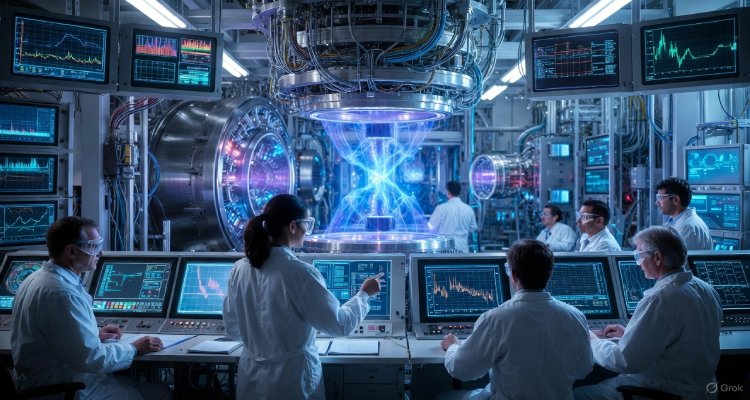The Hidden Science of Climate Change and Its Global Impact
Uncover the unseen forces of climate change through science—how hidden feedback loops, ocean currents, and carbon cycles are reshaping our planet’s future.
Introduction: A Planet at the Crossroads
The sun rises, oceans glisten, forests whisper—but beneath nature’s calm, something is shifting. Climate change is no longer a distant warning; it’s an unfolding crisis driven by scientific phenomena we’re only beginning to understand. From melting ice in the Arctic to extreme heat waves in southern Europe, what lies beneath these visible effects is a complex and often hidden science that’s steering the planet toward an uncertain future.
Context & Background: More Than Just CO₂
For decades, discussions around climate change have centered largely on carbon dioxide emissions. But scientists now emphasize that the problem runs far deeper. Earth’s climate is a tightly woven system of interacting variables—greenhouse gases, ocean temperatures, soil health, polar reflectivity (albedo), and even permafrost methane emissions.
In 2023, a study published in Nature Climate Change confirmed that many natural systems are reaching tipping points. These are critical thresholds where small changes can trigger irreversible shifts—like the sudden collapse of Greenland’s ice sheet or the Amazon rainforest’s transition to savannah. The science, while complex, makes one fact abundantly clear: climate change is not linear—it’s exponential and unpredictable.
Main Developments: The Unseen Forces Driving the Crisis
1. Permafrost Thawing and Methane Bombs
One of the most underreported threats is thawing permafrost. Spanning Siberia, Canada, and Alaska, these frozen grounds store twice the carbon currently in the atmosphere. As temperatures rise, permafrost melts, releasing carbon dioxide and methane—a greenhouse gas 80 times more potent than CO₂ over 20 years.
A 2025 report by the International Arctic Research Center revealed methane spikes in northern Russia, confirming fears of accelerating feedback loops. These emissions are not factored into many climate models, meaning we may be underestimating future warming.
2. Ocean Currents and the Atlantic Conveyor Weakening
The Atlantic Meridional Overturning Circulation (AMOC)—a vital system of ocean currents—helps regulate global temperatures by moving warm water from the tropics northward. Recent data shows signs of weakening, a phenomenon dramatized in the film The Day After Tomorrow, though in reality, the effects would be slower but devastating: extreme winters in Europe, rising sea levels in the U.S. East Coast, and disrupted monsoons in Africa and Asia.
A 2024 study from the University of Copenhagen estimated that the AMOC could collapse by mid-century if emissions continue unabated, potentially triggering a global food and water crisis.
3. Soil Carbon Loss and Microbial Feedbacks
Healthy soil locks away carbon. But rising temperatures and intensive agriculture are degrading topsoil layers, releasing more CO₂. Worse, as soil warms, microbial life accelerates decomposition, pumping even more carbon into the air.
According to the Global Soil Biodiversity Initiative, the world has already lost 30% of its fertile topsoil over the past 150 years—and climate stress is compounding the damage.
Expert Insight and Public Response
“The feedback loops we’re now observing—especially in permafrost and ocean systems—suggest we’re entering a phase of self-sustaining climate change,” warns Dr. Clara Singh, climate systems researcher at NASA’s Goddard Institute. “Even if we stopped all emissions today, certain processes are now in motion that we can’t simply switch off.”
Public reaction is mixed. While climate activism has surged—spurred by movements like Fridays for Future and Extinction Rebellion—climate fatigue is also rising. People are overwhelmed by the complexity and perceived inevitability of climate disaster.
A Pew Research survey in early 2025 found that while 76% of respondents support stronger climate action, only 38% feel their individual actions make a difference.
Global Impact: What Happens Next?
1. Food and Water Security
The hidden science has direct implications for global food systems. Changing rainfall patterns, declining soil health, and warming oceans threaten major crops like wheat, rice, and maize. Meanwhile, freshwater availability is under siege from glacier loss in the Himalayas and Andes.
2. Mass Migration and Economic Strain
By 2050, the World Bank projects over 216 million people may be displaced due to climate-related disruptions. Rising seas, droughts, and heat waves are expected to hit the world’s poorest regions hardest, creating new geopolitical fault lines.
3. Ecosystem Collapse
Coral reefs—home to 25% of marine life—are bleaching faster than expected. Forests are losing biodiversity, and insect populations—critical for pollination—are crashing. These shifts threaten the stability of food chains and global ecosystems.
Conclusion: Science as a Beacon—and a Warning
The hidden science of climate change reveals a stark truth: we are not simply warming the planet—we are destabilizing the very systems that make life possible. But it’s not too late. Scientific understanding, while unsettling, also provides the roadmap for adaptation and resilience.
Technologies like carbon capture, regenerative agriculture, and renewable energy offer hope—but only if combined with global cooperation and urgency.
As we confront the 21st century’s defining challenge, the question isn’t just what is happening, but how much do we dare ignore?
Disclaimer: This article is for informational purposes only and is based on current scientific research available as of 2025. For climate-related decisions, consult experts or official environmental agencies.











